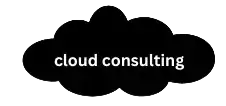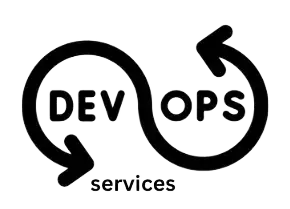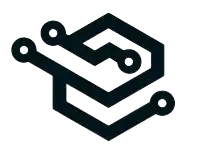iPhone Application Development
For developing any application, Apple provides adequate tools and environment like other developing softwares have. The tools offered by Apple for the development of apps for iPhone are same used for developing programmes for Mac OS X.
iPhone Application Development
For developing any application, Apple provides adequate tools and environment like other developing softwares have. The tools offered by Apple for the development of apps for iPhone are same used for developing programmes for Mac OS X. The two major tools used for developing apps are: Xcode IDE (Integrated Software Development Tool) and Cocoa framework.
Using the Xcode IDE or Software Development Kit (SDK) and perfect integration of it with Cocoa, a developer can develop world-class applications for iPhone.
For developing the application, we use the following technologies:
Xcode
Xcode is Apple's most comprehensive Software Development Kit (SDK) or Integrated Software Development Environment (IDE) that provides environment for developing the programme or applications for iPhone as well as also gives instruction about how to create the program. It is a powerful source editor and a graphic debugger but yet to handle easily and instructions are given for programming. The programmers will only have to follow the instructions and applied those in developing product according to need.
The Xcode suite includes a modified version of free software GNU Compiler Collection (GCC, apple-darwin9-gcc-4.0.1 as well as apple-darwin9-gcc-4.2.1), and supports C, C++, Fortran, Objective-C, Objective-C++, Java, AppleScript, Python and Ruby source code with a variety of programming models, including but not limited to Cocoa, Carbon, and Java. The third parties have added support for GNU Pascal, Free Pascal, Ada, C#, Perl, Haskell and D. The Xcode suite uses GDB as the back-end for its debugger. Xcode compile and debug applications for the ARM processor that run on iPhone OS and also includes WebObjects frameworks.
iPhone Simulator
It is a free utility tool designed for emulating the iPhone browsing environment. It runs, test, and debug your application locally on Macintosh OS X using a simulated iPhone. Primarily used for software functions testing.
Instruments
It collects data from running application and presents that data graphically in real-time to optimize your application. It is used for delivering best iPhone application features, performance and experience.
Interface Builder
Interface Builder makes designing a user interface as easy as drag and drop.
It is Apple's graphical editor for designing user interfaces for both Carbon and Cocoa applications. It works with Xcode in developing apps’s user interface and business logic. It is very easy to handle and works like a graphics user interface (GUI).
Development Resources
iPhone Reference Library
Like every programming suite, iPhone IDE has a rich collection of documentation, guides, and articles that helps programmers in developing software easily and quickly.
Coding Resources
For developing the programme, professionals can also take the help of several online coding resources available on the internet. These codes can be applied in developing the programme.
Cocoa & Cocoa Touch
Cocoa is the programming interface (API) for the Mac OS. It is tightly integrated with Xcode development experience. Cocoa is one among the five major APIs – Carbon, POSIX (for the BSD environment), X11 and Java – available for Mac OS. Using the available development tools – Xcode, Interface Builder, Objective-C language – provided by Apple, Cocoa and other APIs are usually being developed.
Adding animation, networking, and native platform appearance and behaviour to your application becomes easy due to higher level of Cocoa’s APIs. It needs only few lines of code to integrate.
Cocoa comprises primarily two Objective-C object libraries – Foundation Kit and Application Kit – that are known as frameworks. Foundation kit is more commonly known as simply foundation while Application Kit as Appkit. AppKit is built on top of the foundation and used for graphical applications in Mac OS X.
Foundation framework is a generic object-oriented library contains string and value manipulation, containers and iteration. It performs distributed computing, run loops, and other functions, which are not directly tied to the graphical user interface (GUI).
AppKit is the core Cocoa framework that includes graphical controls such as windows, buttons, toolbars, and checkboxes – all easily accessible from Interface Builder. Cocoa framework holds and performs all the event-driven application like managing mouse clicks, formatting keyboard entry, and handling window arrangement for the user. Through using Cocoa and AppKit, the developed application will look and behave like a true Mac application.
Cocoa Touch Framework
Cocoa Touch Framework is an API for developing software programs able to run on Apple’s iPhone and iPod. Cocoa Touch provides a similar set of functionality for iPhone that provides touch-based, mobile experience on iPhone. It provides an abstraction layer of the iPhone OS, which is the operating system for the iPhone and iPod Touch. It is based on the Cocoa API toolset for developing programs for Mac OS X computers. The tools for Cocoa Touch are included in the iPhone SDK. Objective-C gives flexibility to Cocoa Framework.
The Cocoa framework primarily focuses on touch-based interfaces and optimisation for iPhone OS while the UIKit provides the basic tools and infrastructure for implementing graphical, event-driven applications in iPhone OS.
Core Data
The Core Data facilitates the programmers to easily create well-factored applications due to its data handling properties as it handles all the complexities of data management for you very efficiently like document undo operations, or caching. Moreover, it provides pre-built controller objects that eliminate the need for much of the glue code between your application's user interface and its data model.
Core Animation
Using Core Animation, you can create a rich cinematic experience without much coding
It binds the power of the all Mac OS X graphics frameworks including QuickTime, Quartz, OpenGL and Quartz Composer into a single easy-to-use developer interface.
Core Image
Core Image provides the facilities of creating real-time image processing solutions. It contains inbuilt filter effects like blur/sharpen, color effects and distortions.
QTKit
Using QTKit, you can edit, splice, combine and transcode QuickTime video content in your Cocoa application. The QTKit Capture API allows you to capture video from DV and HDV cameras and more.
Core Audio
Core Audio allows you add world-class audio features in your application using OpenAL.
We request you to call us at +91 9313063554 or email us at deepak@roseindia.net for you software development needs.







